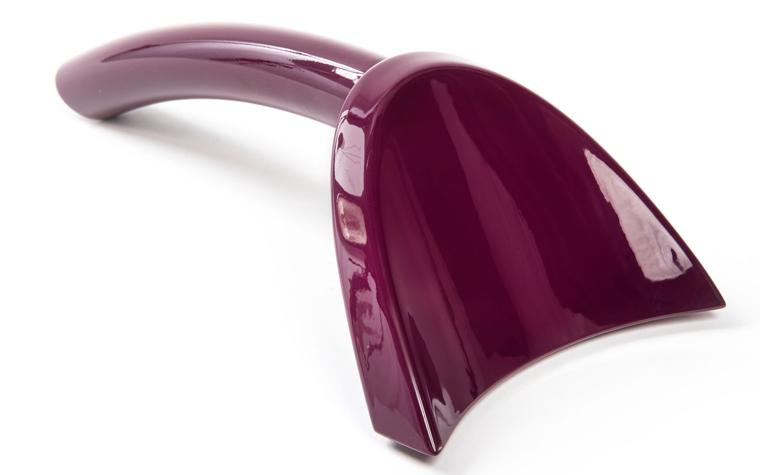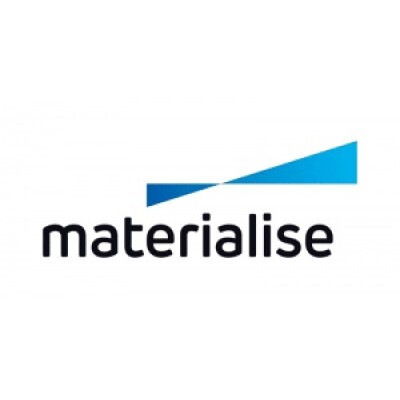Vacuum Casting: Medtech’s Ideal Solution for Volume Production
Vacuum casting has a lot to offer the medtech industry; design flexibility, affordability, and a short time-to-market. Discover how Materialise uses this technology to help customers innovate quickly and react to urgent increases in demand.
The medical technology industry (medtech for short) has often used technologies such as additive manufacturing and vacuum casting to help spark innovations and respond to changes in an ever-shifting industry. Their design freedom, ample selection of high-quality materials and finishing degrees, and general flexibility make them ideal for everything from single-use instruments to the crucial machinery found in the OR.
Why choose vacuum casting?
As with any manufacturing project, choosing the right technology is key. When used for small series production, vacuum casting is faster and more financially viable than comparative serial production technologies like injection molding, while offering comparable smoothness to ensure cleanability.
“This technology is ideal for orders of around 100 pieces, and we offer a wide range of finishing degrees, especially for painting. We also offer the application of threaded inserts and other assemblies,” explains Jiri Pinkas, a CAD Technician and Process Engineer at Materialise.
“These two reasons are key drivers for our customers. There are some other general advantages of vacuum casting technology as well, so you can see why so many in the industry decide to go for it.”
Versatility is key
One such advantage is the versatility of its design process, greatly enhancing the potential for product innovation. Unlike many other technologies, customers can request changes to the mold, such as tweaks to minor details in the design, even in the middle of a project. The difference is in the construction of the mold — silicone is used for vacuum casting, which means it can be created in two days and separated into two pieces due to the flexibility of the material. The aluminum molds used for injection casting can take months to build and have to be split into more pieces because of their undercuts.
Customers also have a lot of finishes to choose from, particularly when it comes to painting; different textures, high-gloss or translucent surfaces, and matte and satin options, to name a few. Not only do these options outweigh those available for other technologies, our ability to provide them all in-house is important.
Airinspace: An upswing in demand
In some cases, these advantages become particularly crucial — just ask French manufacturer Airinspace. Since 2014, Materialise has provided vacuum casting services for two end-use components of the company’s RHEA Cubair system — a dry-mist disinfection system that helps sterilize medical facilities.
“We chose to work with Materialise because they offer excellent commercial and technical support. Price positioning is also a very important consideration, and Materialise is very well placed,” explains Nicolas Klaczynski, Product Development Manager at Airinspace.
“We mainly order parts that are impossible to make with traditional techniques, such as our patented product distribution nozzle manufactured through powder sintering.”

High-gloss paint is just one of the many quality finishing options available for vacuum casting.
While most orders were for low-volume production, February and March of 2020 saw a sudden and urgent upswing in demand. With the COVID-19 pandemic heavily impacting hospitals, the French government placed a large order that placed significant demand on Airinspace’s supply chain.
In those two months, Materialise was asked to produce over 1,000 parts at very short notice. By putting together a dedicated production team, following a standardized procedure to ensure conformity, and producing several additional molds to help reduce lead times, it was a challenge that we were able to meet.
“Over the years, Materialise has helped us optimize our parts to achieve trouble-free production and respect our performance needs,” says Nicolas. “For this industry, we also require traceability on our manufacturing batches, which we have implemented together. When we came to them with this request, they responded immediately, and the results met our expectations.”
“The parts we make for Airinspace are finished with a high-gloss topcoat, and we also apply the threaded inserts. It’s more efficient for them, as they can arrange it all with us rather than going to several different companies,” says Jiri.
“It shows us that we’re now able to repeatedly produce parts with stringent surface requirements for the medtech industry with controlled and uniform quality. More importantly, it helped us build an even healthier relationship with the Airinspace team.”
The vacuum casting process
Jiri explains that, like all vacuum-casted parts, the Airinspace pieces were created by following a carefully controlled six-step process.
“Basically, vacuum casting is based on copying a physical model. We’ll always begin by evaluating the feasibility together with the customer to see if we can produce it with this technology.”
The second step is to create the master model — a 3D-printed copy of the original piece, which is in turn used to create a silicone mold. The parts are then cast and sent through post-processing, preparing them for painting; a layer of primer and a high-gloss topcoat, as well as any additional requests, such as the application of threaded inserts.
![]() 3D printing and vacuum casting combine to create the perfect part.
3D printing and vacuum casting combine to create the perfect part.
“It’s a pretty fast process. The feasibility evaluation takes about one day. From the time that a customer places an order, we take about six days to make both the printed model and the molds. After that, it depends on how many parts the customer needs, but we can always produce more molds to speed it up.”
“In this case, vacuum casting was definitely the right choice,” Jiri adds. “Rim technology and injection molding would also have worked, but it would have cost the customer a lot of money, and the post-processing options are limited. It would have meant more work and more risk for Airinspace to arrange the finishes they required with other companies.”
Learning the right lessons
While an unexpected increase in demand has the potential to catch suppliers off guard, it also has the potential to teach companies valuable lessons about their capabilities.
“Dealing with surges in demand like this shows us that we’re now able to repeatedly produce parts with stringent surface requirements for the medtech industry with controlled and uniform quality. More importantly in this case, it helped us build an even healthier relationship with the Airinspace team.”
The quality of the customer-supplier relationship is particularly helpful in situations like this; making adjustments or finding solutions to unique problems is always easier when communication is open and friendly.
“A good relationship is essential,” agrees Nicolas. “Materialise always meets expectations, and we’re very happy doing business together.”


